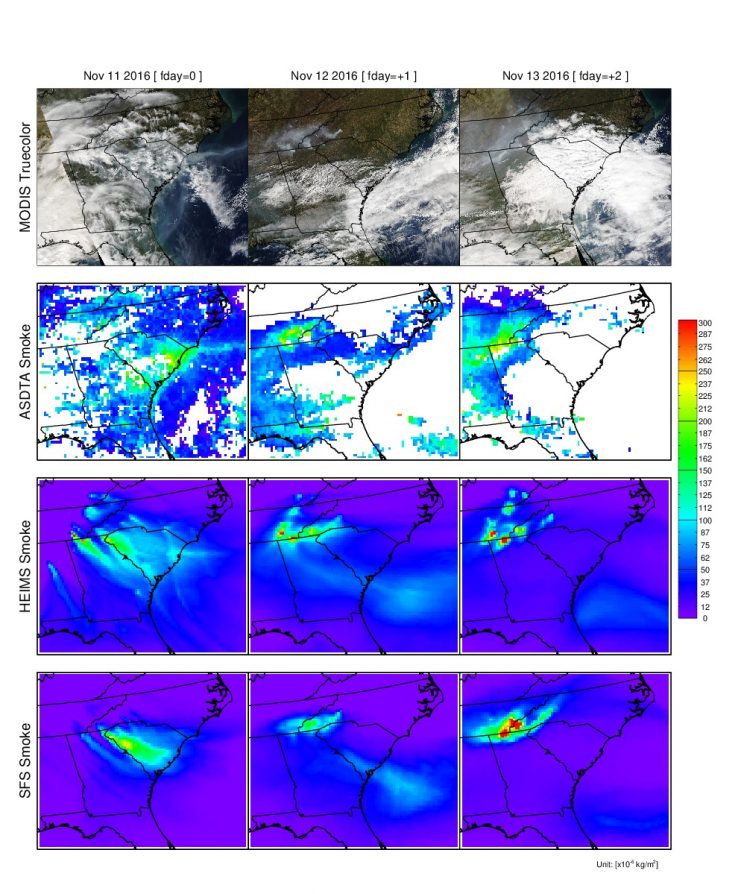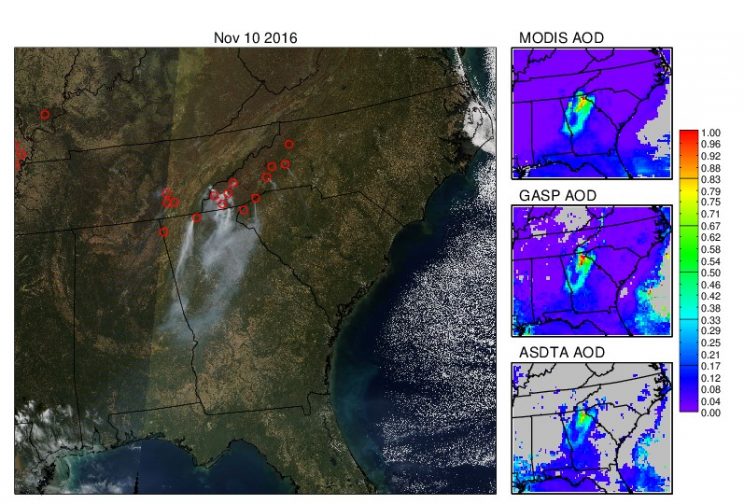The HYSPLIT-based Smoke Forecasting System
The NOAA Smoke Forecasting System integrates the NOAA NESDIS information on the location of wildfires with NOAA National Weather Service inputs from the North American Mesoscale model into smoke dispersion simulations from the NOAA ARL HYSPLIT model to produce a daily 48-hour prediction of smoke transport and concentration. The model also incorporates U.S. Forest Service estimates for wildfire smoke emissions based on vegetation cover. This system is intended as guidance to air quality forecasters and the public for fine particulate matter emitted from large wildfires and agricultural burning which can elevate particulate concentrations to unhealthful levels.
ARL is developing the HYSPLIT-based Emissions Inverse Modeling System (HEIMS) to estimate wildfire emissions from the transport and dispersion of smoke plumes inferred from NOAA GOES satellite observations. HEIMS uses the smoke transport patterns captured by geostationary satellites with a high temporal resolution as a constraint under a general four-dimensional variational (4D-Var) data assimilation scheme. The model combines information from NOAA ARL, NOAA NESDIS and the US Forest Service to produce updated fire emissions. The ARL-developed HYSPLIT is the core engine for HEIMS, and products are intended for future use in the operational smoke forecast system.
- Current Smoke Forecasts – Current smoke forecasts being produced by NOAA.
- Smoke Verification – Use of analyzed smoke from satellite imagery to verify smoke forecasts.
- HYSPLIT Model Details – Brief description of the Smoke Forecasting System.
- Relevant Links – See below for resources for monitoring forest and wildland fires and smoke.
Official NCEP FVS Smoke Verification Using GOES AOD Product
Smoke Forecasting System Verification Products
The following verification products are made available for evaluation purposes only. For a history of model changes refer to the smoke forecast model change log. This evaluation consists of a GIS shapefile match between the smoke plumes derived by a NOAA NESDIS satellite analyst using the Hazard Mapping System (HMS) and the HYSPLIT modeled smoke (PM2.5) concentration shapefiles.
Smoke Verification of CONUS Operational Forecast
Smoke Verification of Alaska Operational Forecast
Smoke Verification of Hawaii Operational Forecast
For current smoke forecasts, see https://www.weather.gov/sto/ExperimentalSmokeForecast.
For HYSPLIT ensemble smoke forecasts, see Probabilistic smoke products.



